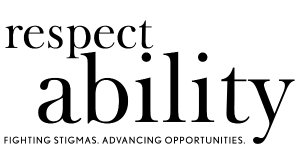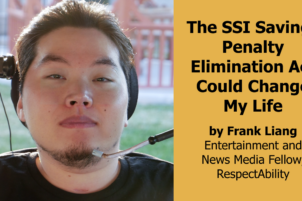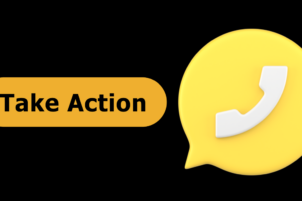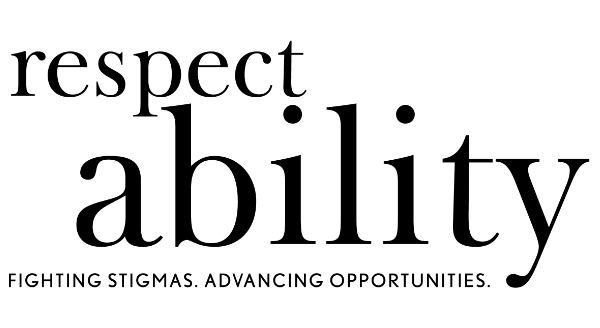Sacramento, CA, January 20 – This week, the government of California completed a request for information (RFI) for public feedback, ideas, and innovations on how to spend more than $600 million dollars that are part of the Community Economic Resilience Fund (CERF). In response to this request, RespectAbility, a national, nonpartisan nonprofit organization, submitted testimony on how to implement best practices, advocate for greater inclusion and improve the standing of people with disabilities in the workforce.
“The CERF and other financial investments under the American Rescue Plan Act (ARPA) represent unprecedented new resources for efforts to get people with barriers to employment into the labor force,” said Olegario “Ollie” Cantos VII, RespectAbility’s new Chairman. “Now, as the pandemic continues to reshape our economy, it is time to devote significant attention to supporting the economic advancement of students, job-seekers, and entrepreneurs with disabilities.”
There are more than 1.9 million working age (18-64) Californians living with some form of disability. Before the pandemic, only 38.2 percent of the working age population of people with disabilities were employed. It is critical that new federal investments to drive post-pandemic recovery reflect the perspectives of individuals with disabilities and advocates impacted by these unemployment rates. In order to make the workforce more inclusive, and to find practical ways to make the workforce more accessible for the entire population, RespectAbility collects, summarizes, and publicizes ideas on key workforce solutions. To learn more about RespectAbility’s advocacy work, please visit our Policy website.
RespectAbility’s full testimony is presented online and below:
To: The Employment Development Department (EDD) the Labor and Workforce Development Agency (LWDA), the Office of Planning and Research (OPR), and the Governor’s Office of Business and Economic Development
From: Staff and Board, RespectAbility
Re: Community Economic Resilience Fund Program (CERF) – RFI – WSIN21-23
Date: January 20, 2022
Thank you very much for the opportunity to submit public comments regarding the Community Economic Resilience Fund Program (CERF). This $600 million dollar investment in California’s future comes at a crucial time as employers struggle to fill labor shortages, workers with barriers to employment are seeking better jobs, and the economy grapples with the third year of pandemic related uncertainty.
RespectAbility is a nonprofit organization that fights stigmas and advances opportunities so that people with disabilities can fully participate in all aspects of community. We have our main office in Los Angeles and consider California to be our laboratory and proving ground of strategies for success. As such, we are keen to share critical data points to help ensure that CERF funds serve the more than 4 million residents living with some form of disability — almost 11 percent of the state’s population. This data is almost certainly underreported, as the US Census Bureau tells us that the real number is around one in five Americans. Among Californians, there are 2.2 million Black, Indigenous, and People of Color (BIPOC) people with disabilities. That means that 53 percent of all Californians with disabilities are also members of other marginalized communities and face barriers such as systemic racism.
Prior to the pandemic, California’s employment rate for working-age people with disabilities was 38.2 percent, compared to 76.4 percent of people without disabilities. This disparity is even more striking when broken down by race. 39.8 percent of working-age people with disabilities who are white have jobs compared to only 29.8 percent of those who are Black.
As such, our comments below specifically discuss the disability dimensions, implications, and elements of the core topics of LWDA/OPR’s RFI. We know that you, like us, are eager to properly serve all Californians and we offer our support with these suggestions:
Proposed Metrics for Phase 1 and 2 of CERF
“What gets measured, gets done.” At this moment, we have a perfect storm of a tremendous demand for workers in the labor force and real strategies and opportunities that are beginning to increase the labor force participation rate of people with disabilities. In order for CERF to fully take advantage of these phenomena to advance employment for people with disabilities, it is important to track appropriate metrics that are inclusive of people with disabilities. By tracking the labor force participation rates of historically marginalized groups like people with disabilities, workforce leaders will have the data necessary to make more informed choices about economic investments and promoting greater economic equity in labor force. We believe that it is tremendously important to track the gap in labor force participation rates between working-age people with and without disabilities. Identifying and tracking gaps for historically marginalized communities functions as a useful change indicator and measure of the inclusivity of a state’s economy. Further, we also believe that workforce leaders and educators need to be held accountable by tracking trends and gaps in high school graduation rates between students with and without disabilities. Indeed, in 2019, over 69,000 students with disabilities left California’s K-12 school system. Sadly, 32 percent of these students left without a high school diploma, compared to 17 percent of students without disabilities, forever depressing their future job prospects and income. We respectfully request that you continue to track both the absolute numbers and gaps in outcomes to be held accountable on how CERF will help Californians with disabilities.
Approaching Research in Phase 1
As your agencies grapple with the effort to fully utilize CERF and make the most of this investment, your teams will be engaging in new research. As you approach that research, we hope your staff will be fully trained up and better understand accessibility issues and best practices in accessibility. As defined by the CDC, “Accessibility is when the needs of people with disabilities are specifically considered, and products, services, and facilities are built or modified so that they can be used by people of all abilities.” USAbility.gov offers some basic guidelines and information to support user experiences and to help government/private sector efforts. Likewise, there is a growing body of literature that discusses strategies for ensuring that new information, data, or research is made fully available and accessible to audience members with a wide range of disabilities. Things as simple as increasing font sizes or using captions on videos improve the accessibility of a finished research project. Lastly, public sector agencies and private sector companies have found common best practices that prove a solid return on investment. Despite this relative ease and clear benefit, in our near decade of engaging with California workforce programs, we have found that these accessibility measures appear to be the exception, not the rule. Many workforce programs websites and materials remain inaccessible to job seekers with disabilities. More details here.
Feedback Loops in Phase 2
From RespectAbility’s perspective, disability needs to be part of any success criteria associated with any expenditure of taxpayer money. As one in five people are a part of this intersectional community, it is virtually impossible to track benefit to the local community and beyond, without specifically tracking individuals with disabilities. For example, if the number of people living in poverty drops, that indicates success. Yet, if the number of people with disabilities living in poverty stays the same or drops less, it is a strong indicator of inequitable benefits to the community, which may implicate other intersections in traditionally marginalized groups. Likewise, tracking the number of jobseekers with disabilities who participate in a CERF funded program and working with community partners to increase those numbers from year-to-year would reflect how far such programs are truly building inclusivity into their work.
Disability organizations are deeply motivated by the principle of “nothing about us, without us.” This is because problems are best solved by those with direct, lived experience with the problem. People with disabilities have valuable perspectives and deep lived experience to share at every stage of a major process or program like CERF. Regularly meeting with self-advocates, accessibility consultants, community stakeholder groups and program participants themselves needs to be part of the feedback loops that LWDA/OPR use to successfully carry out CERF. Further, it is important that this feedback represent the broad diversity of the disability community. In addition to being rich in lived experience, the community is deeply diverse along racial and ethnic lines. Black, Indigenous, and People of Color (BIPOC) people with disabilities are among the most marginalized groups and their intersectional identities need to be centered in your effort, which means they need to be part of your feedback loop. Similar effort needs to be undertaken in ensuring representation and planning for the broad diversity of languages among Californians with disabilities, both in planning and in success metrics.
Accessibility and Assistive Technology needs to be part of Initial Budgets and Planning
As defined by California’s own Department of Rehabilitation (DOR), “Assistive technology (AT) is anything that is used to increase, maintain, or improve the functional capabilities and independence of persons with disabilities, aging populations, and people with non-communicable diseases. AT enables people to live healthy, productive, and dignified lives, and promotes inclusion and participation in education, the labor market, and civic life.” There is incredible complexity in this topic and it is ever evolving as technology improves, software is updated, hardware changes, and new models replace obsolete ones. Based in California, Ability Tools – Assistive Technology Network offers resources, training, and AT services. RespectAbility’s perspective is that the reasonable cost of assistive technology and accessibility needs to be built into the initial planning of budgets and programs. Leaving aside legal obligations, which themselves would require much of this, it is a fundamental imperative that government programs should do the greatest good for the greatest number of people, and this is a step require both to allow people with disabilities to participate and allow an economy hungry for talent to benefit from the talents of people with disabilities. Not only does building accessibility in from the outset preclude later legal challenges, it is also substantially cheaper than the type of remediation that results from such proceedings.
As an organization that advocates on behalf of job seekers with disabilities and their families, we believe that collecting the best ideas, emerging practices and innovative policies is critical to ensuring that Americans with and without disabilities have equal access to good jobs. Without such ideas communities and policymakers cannot direct appropriate resources to the places that need them most, particularly in the wake of the COVID-19 pandemic. If you have any questions or would like to discuss these matters further, our team stands ready to help, however we can.
Thank you.
These comments were prepared by RespectAbility’s Apprentices, Staff, and Board Members. Special credit is due to current Apprentices Shereen Ali, Roy Payan, Tammie Stevens, Alex Hilke, and Elizabeth Pezone who have been active contributors to our organization’s work on policy advocacy, civic engagement and advancing disability inclusion. They represent future leaders who will have a substantial impact on the opportunities and aspirations of millions of Americans with disabilities.







